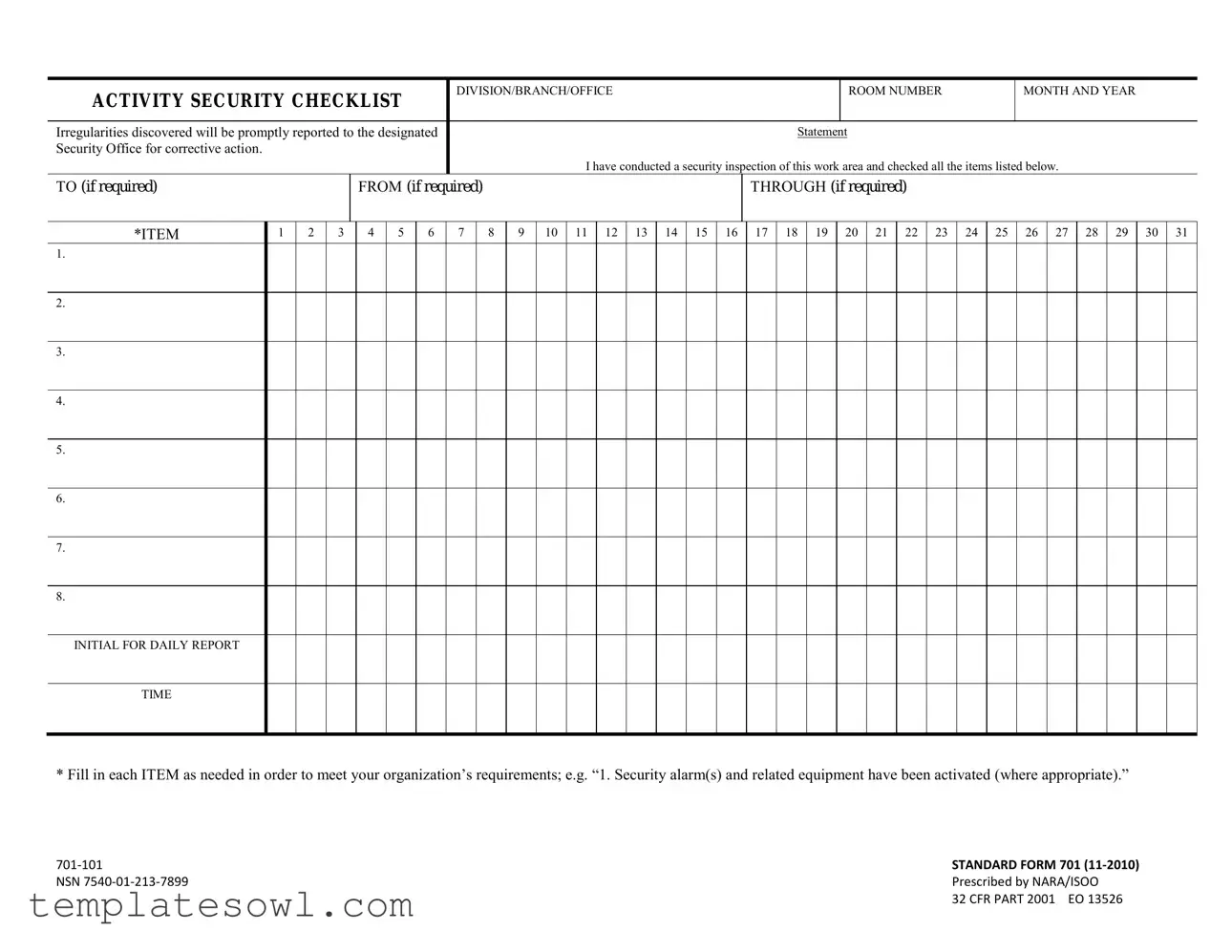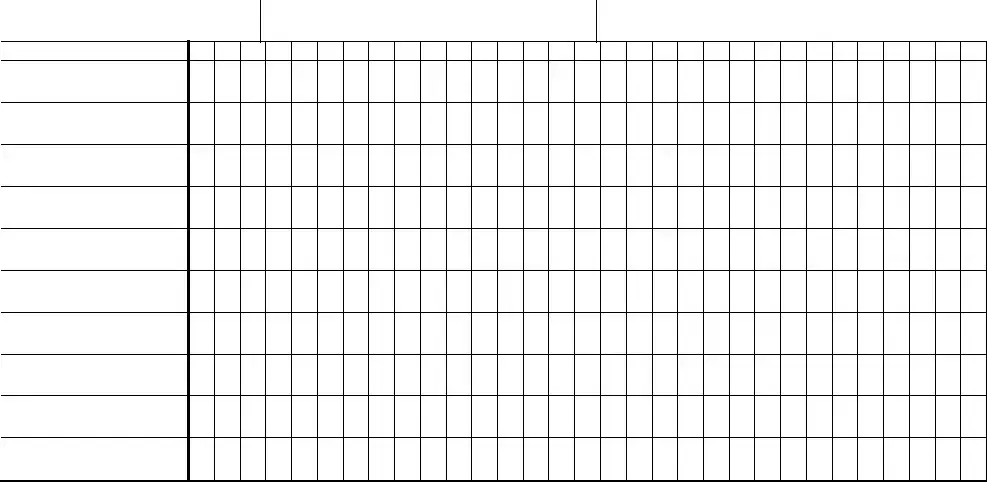What is the SF 701 form?
The SF 701 form, also known as the Activity Security Checklist, is a document used to conduct security inspections in various federal workspaces. It helps ensure that security protocols are being followed and identifies any irregularities that could compromise sensitive information or facilities.
Who is required to use the SF 701 form?
This form is primarily utilized by employees within federal agencies who are responsible for maintaining security in their work environments. It's particularly relevant for those who oversee sensitive information or areas where security measures must be adhered to closely.
When should the SF 701 form be completed?
The form should be filled out regularly, at specified intervals designated by the agency. It’s typically used during daily inspections or whenever there is a change in personnel, equipment, or security protocols in a workspace.
What items must be checked on the SF 701 form?
While the exact items can vary by organization, common checks include verifying that security alarms are functioning, ensuring sensitive materials are secured, and confirming that personnel follow authorized access protocols. Each item is tailored to meet specific security needs.
What happens if irregularities are found while filling out the SF 701 form?
If any irregularities are discovered, they must be promptly reported to the designated Security Office. Addressing these issues quickly is crucial in maintaining a safe and secure work environment, so immediate corrective action can be taken.
How is the SF 701 form submitted?
Submission processes may differ based on agency protocols. Generally, once completed, the form may need to be filed electronically or submitted to a supervisor for review, depending on the specific procedures established by your organization.
Can the SF 701 form be modified?
Yes, agencies are permitted to customize the SF 701 form to suit their security requirements. Additional items or checks may be added as necessary to address unique security challenges that the agency faces.
Who reviews the SF 701 forms after they are completed?
Typically, designated security personnel or management within the agency will review the completed SF 701 forms. This review process helps ensure that any noted irregularities are addressed and that compliance with security measures is maintained.
How long should records of the SF 701 form be kept?
Records retention policies can vary, but generally, forms should be kept for a specified period that aligns with agency guidelines. This retention helps to maintain a historical record of security inspections and the status of workplace security.
What training is required to fill out the SF 701 form?
While specific training requirements may differ, individuals responsible for completing the SF 701 form typically receive training on security protocols and the importance of conducting thorough inspections. Understanding the implications of security measures is essential for effective compliance.

